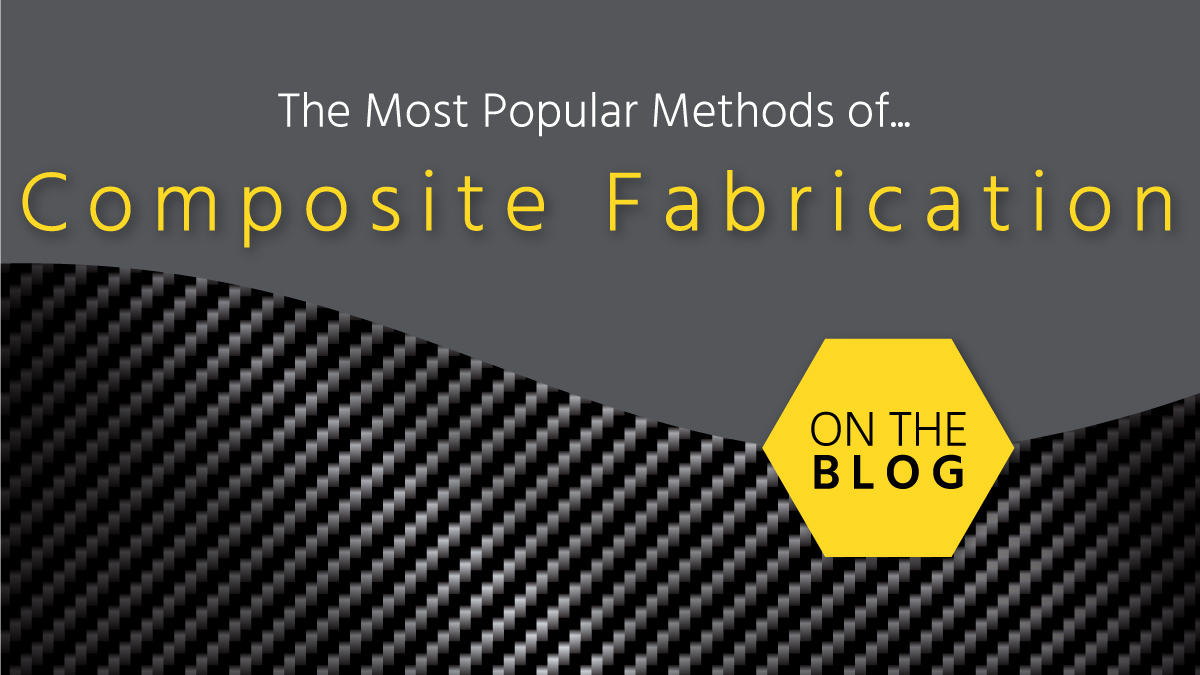The most common fabrication method used for composites is the Hand Lay-Up technique, due to its simplicity, low initial costs, and suitability for complex shapes.

Polymer Matrix Composites
Material Composition
Polymer Matrix Composites (PMCs) primarily consist of polymer matrices like epoxy, polyester, or vinyl ester. They are often reinforced with fibers such as glass, carbon, or aramid.
Advantages
- Lightweight
- High corrosion resistance
- Good electrical insulation properties
Disadvantages
- Less heat resistant
- Lower mechanical properties compared to other composites
Common Applications
- Automotive components
- Aircraft structures
- Marine hulls
Metal Matrix Composites
Material Composition
Metal Matrix Composites (MMCs) use a metal like aluminum, titanium, or magnesium as the matrix and reinforce it with fibers like silicon carbide, boron, or aluminum oxide.
Advantages
- High thermal conductivity
- Excellent wear resistance
- High mechanical strength
Disadvantages
- Expensive
- Difficult to fabricate

Common Applications
- Aerospace components
- High-performance automotive parts
- Industrial machinery
Ceramic Matrix Composites
Material Composition
Ceramic Matrix Composites (CMCs) are made from ceramic materials like silicon carbide, alumina, and zirconia, and they usually feature carbon, silicon carbide, or oxide fibers.
Advantages
- High-temperature resistance
- Excellent corrosion resistance
- High hardness
Disadvantages
- Brittle
- Expensive
Common Applications
- Jet engine components
- Turbine blades
- Brake systems
Hybrid Composites
Material Composition
Hybrid Composites are a blend of two or more types of matrices and reinforcements. For example, a polymer and ceramic matrix may be combined and reinforced with both glass and carbon fibers.
Advantages
- Customizable properties
- Can combine the benefits of different types of composites
Disadvantages
- Complex fabrication process
- High cost
Common Applications
- Aerospace engineering
- High-performance automotive applications
- Specialized industrial applications
Criteria for Selecting Fabrication Methods
Selecting the most suitable fabrication method for composites involves several important considerations. The following points detail these critical criteria.
Material Properties
- Type of Matrix and Reinforcement: The choice between polymer, metal, or ceramic matrices and their respective reinforcements affects the fabrication method.
- Mechanical Properties Needed: Specific requirements like tensile strength and compressive strength will guide the choice of fabrication method.
- Thermal and Electrical Properties: Considerations such as heat resistance and electrical conductivity also factor into the choice of fabrication method.
Application Requirements
- Load Conditions: Static or dynamic loading conditions influence the choice of a suitable fabrication method.
- Environmental Exposure: The composite’s exposure to chemicals, high temperatures, or moisture will affect which fabrication method to use.
- Regulatory Compliance: Industries like aerospace and medical have strict regulations that may limit the choice of fabrication methods.
Cost Considerations
- Material Costs: The cost of the materials required for different fabrication methods needs to align with the budget.
- Labor Costs: Some methods, like hand lay-up, require more labor, affecting the overall cost.
- Tooling and Equipment Costs: The need for specialized tooling or machinery can add to the overall cost.
Time Constraints
- Lead Time: The time from the start to the completion of the project may require faster fabrication methods.
- Scalability: The fabrication method should allow for easy scalability if large-scale production is required.
- Project Deadlines: Tight project deadlines may necessitate the choice of faster, but possibly more expensive, fabrication methods.

Common Fabrication Methods
Selecting the right fabrication method is crucial for achieving the desired properties in a composite material. Below, we explore the most common methods used in the composite industry, detailing their processes, advantages, disadvantages, and typical applications.
Hand Lay-Up
- Process: Involves manually placing layers of reinforcing material into a mold, followed by a resin pour. The composite then cures naturally or under controlled conditions.
- Advantages: Simple to set up, low-cost, and allows for complex shapes.
- Disadvantages: Labor-intensive, limited material choices, and not suitable for high-volume production.
- Applications: Boat hulls, small to medium-sized composite parts.
Compression Molding
- Process: A pre-impregnated composite mat gets placed into a mold. Pressure and heat are then applied to shape and cure the material.
- Advantages: Suitable for high-volume production, offers excellent surface finish, and can use a variety of reinforcements.
- Disadvantages: High initial costs for tooling and not ideal for complex shapes.
- Applications: Automotive parts, aerospace components, electrical housings.
Pultrusion
- Process: Continuous fibers are pulled through a resin bath and then through a heated die to form and cure the composite material.
- Advantages: High-speed production, consistent cross-sectional shapes, and excellent material properties.
- Disadvantages: Limited to linear, constant cross-sectional profiles.
- Applications: Rods, beams, and other linear components often found in infrastructure projects.
Resin Transfer Molding
- Process: Uses a closed mold, where a vacuum draws the resin into the fiber preform.
- Advantages: Excellent surface finish, allows for complex shapes, and uses a wide range of resins and fibers.
- Disadvantages: Longer cycle times compared to other methods and higher material costs.
- Applications: Aerospace structures, automotive parts, high-quality visual components.

Filament Winding
- Process: Continuous fibers are wound around a rotating mandrel, with resin applied during or after winding.
- Advantages: High fiber volume and control over orientation, making it suitable for high-stress applications.
- Disadvantages: Limited to axis-symmetric parts, and initial setup can be expensive.
- Applications: Pressure vessels, pipes, and masts.
Hand Lay-Up Method
The Hand Lay-Up method is one of the simplest and oldest techniques in composite fabrication. Below, we discuss the basic mechanics, advantages, disadvantages, and common applications of this method.
Basics and Mechanism
- Process Steps: Starts with a mold prepared with a release agent. Workers manually place layers of fiber mat or cloth into the mold. A roller or brush applies the resin to bond the fibers. Curing takes place at room temperature or in a controlled environment.
- Reinforcement and Matrix: Generally uses simple materials like fiberglass for reinforcement and epoxy or polyester resins for the matrix.
- Curing: The composite material hardens either at room temperature or under heat, depending on the resin used.
Advantages and Disadvantages
- Advantages:
- Easy to set up, requiring minimal special equipment.
- Flexibility in layering allows for complex shapes and designs.
- Lower initial costs make it accessible for small projects or prototyping.
- Disadvantages:
- Labor-intensive, making it less suitable for large-scale production.
- Limited control over fiber orientation.
- The risk of air entrapment, which can weaken the final product.
Common Applications
- Boat Hulls: The method allows for the construction of complex shapes required in boat hulls.
- Automotive Parts: Ideal for small-scale production of specialized automotive components.
- Artistic and Architectural Features: Used in the production of sculptures and intricate architectural elements due to the ability to create complex shapes.

Comparison of Fabrication Methods
Choosing the right fabrication method for composite materials can make or break a project. Factors like efficiency, cost, and application-specific suitability are crucial. Below, we compare some commonly used methods based on these factors.
Efficiency
- Hand Lay-Up:
- Slow and labor-intensive, but allows for highly complex shapes.
- Best for small-scale or custom projects.
- Compression Molding:
- Efficient for medium to high-volume production.
- Requires expensive setup but yields high-quality parts quickly.
- Pultrusion:
- Extremely efficient for producing linear, constant cross-sectional profiles.
- High-speed production with consistent quality.
Cost
- Hand Lay-Up:
- Low initial costs but higher labor costs.
- Most cost-effective for small, custom projects.
- Compression Molding:
- High initial tooling costs but lower per-unit costs in high-volume runs.
- Pultrusion:
- Requires specialized machinery, making initial costs high.
- Economical in long runs due to its speed and low waste.
Suitability for Specific Applications
- Hand Lay-Up:
- Ideal for complex shapes like boat hulls and architectural features.
- Compression Molding:
- Commonly used in the automotive and aerospace industries where high-strength components are needed.
- Pultrusion:
- Best for structural components requiring high tensile strength, such as beams and rods in construction.
Case Studies
The use of composite materials has revolutionized various industries by offering superior mechanical properties and design flexibility. Here, we will delve into some case studies across the aerospace, automotive, and marine sectors to understand how different fabrication methods are applied.
Aerospace Industry
- Material Selection: Carbon-fiber-reinforced polymers (CFRP) often get chosen for their high strength-to-weight ratio.
- Fabrication Method: Resin Transfer Molding and Compression Molding are common due to the high-quality finish and strength requirements.
- Applications: Used in the construction of aircraft wings, fuselages, and interior components.
- Example: Boeing’s 787 Dreamliner makes extensive use of CFRP to reduce weight and improve fuel efficiency.
Automotive Industry
- Material Selection: Glass fiber composites are popular for their balance between cost and performance.
- Fabrication Method: Compression Molding is frequently used for mass production.
- Applications: Car bumpers, dashboards, and even chassis components can be made from composites.
- Example: The Chevrolet Corvette utilizes various composite components to achieve both lightness and strength.
Marine Applications
- Material Selection: Fiberglass-reinforced plastics (FRP) are commonly used for their resistance to water and salt corrosion.
- Fabrication Method: Hand Lay-Up is popular for constructing boat hulls due to its ability to create complex shapes.
- Applications: Boat hulls, decks, and even masts can be made from composites.
- Example: Luxury yachts like those from Azimut Yachts often employ FRP composites for both structural and aesthetic components.




